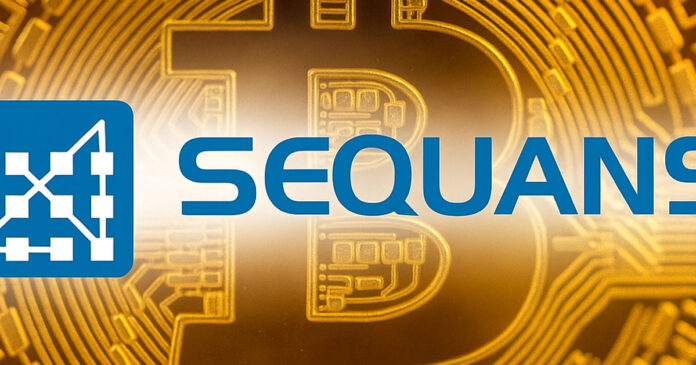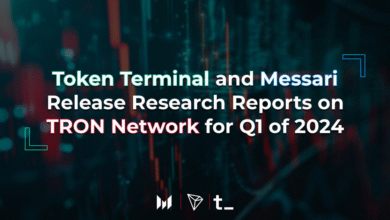Sequans Communications Bitcoin Investment Strategy Explained

Sequans Communications Bitcoin strategy has taken a dramatic turn as the French semiconductor firm publicly announced its plan to invest $384 million into purchasing Bitcoin. This strategic move showcases Sequans Communications investment in securing a foothold in the cryptocurrency market. By implementing a robust bitcoin treasury strategy, the company aims to bolster its financial resilience against market fluctuations. Partnering with Swan Bitcoin, a leader in bitcoin wealth management, will provide Sequans with expert guidance in executing this initiative effectively. With this significant investment, Sequans not only positions itself for potential future growth but also emphasizes the importance of cryptocurrencies in diversifying its financial portfolio.
Sequans Communications’ recent financial maneuvers illustrate a growing trend among technology firms exploring digital currencies as viable assets. The firm’s substantial fund allocation towards Bitcoin signifies a shift in investment perspectives and highlights the increasing relevance of cryptocurrencies in corporate strategies. By leveraging its partnership with Swan Bitcoin, Sequans is enhancing its approach to managing digital assets, incorporating a thorough treasury strategy designed to strengthen its fiscal standing. Such a commitment further emphasizes the significance of Bitcoin in augmenting a company’s financial stability and long-term value creation. As tech firms adapt to the evolving financial landscape, the emphasis on digital currencies becomes paramount in ensuring sustained growth.
Sequans Communications Investment in Bitcoin: A Bold Move
Sequans Communications made headlines with its recent decision to invest $384 million in Bitcoin, marking a significant investment strategy shift for the French semiconductor company. This move not only highlights the growing trend of traditional businesses diversifying their portfolios with cryptocurrency but also emphasizes Sequans’ commitment to enhancing its financial resilience. By incorporating Bitcoin into its treasury strategy, the company positions itself to leverage the digital asset’s growth potential while mitigating risks through proper asset management.
This investment can be seen as a pivotal point for Sequans, as cryptocurrencies like Bitcoin provide unique financial opportunities. The influx of cash from Sequans’ core business operations can now fuel further acquisitions of Bitcoin. This indicates a well-thought-out approach that aligns with the rising institutional interest in Bitcoin, underscoring the importance of having a diversified investment portfolio that includes blockchain technology.
The Bitcoin Treasury Strategy: Navigating Market Dynamics
As Sequans Communications ventures into the world of Bitcoin, the company’s treasury strategy becomes crucial for maintaining financial health. By forming a partnership with Swan Bitcoin, Sequans aims to create a robust governance framework that ensures secure transactions and market transparency. This strategic alliance will allow Sequans to navigate the volatile cryptocurrency landscape with expert guidance, ensuring informed decision-making on its Bitcoin purchases.
The collaboration with Swan Bitcoin will facilitate not just operational security but also assist Sequans in maximizing its Bitcoin holdings’ long-term value. A well-executed treasury strategy is paramount in managing assets, and with the volatility associated with cryptocurrencies, having a professional partner is invaluable. This proactive approach will empower Sequans to stay ahead in leveraging Bitcoin’s unique properties while addressing market changes effectively.
Why Sequans Decided to Buy Bitcoin and Its Future Implications
Sequans Communications’ decision to allocate a significant portion of its capital to Bitcoin is indicative of the confidence in the cryptocurrency’s potential for growth and stability. The CEO, Georges Karam, expressed excitement about this new venture, especially in regards to enhancing the company’s financial resilience. By investing in Bitcoin, Sequans sets a precedent not just for semiconductor companies but for traditional businesses worldwide, encouraging them to explore cryptocurrencies for diversification.
This bold move can also have several future implications for Sequans. The successful execution of this investment strategy could lead to increased shareholder confidence, attracting more investments and partnerships within the tech industry. Furthermore, as the crypto market matures, the long-term benefits of holding Bitcoin may position Sequans as a leader in adopting innovative financial strategies, ultimately shaping its path for future growth.
Swan Bitcoin Partnership: Enhancing Financial Strategy
Sequans Communications’ new partnership with Swan Bitcoin is a game-changer for its financial strategy. Swan, renowned for its expertise in Bitcoin wealth management, will help Sequans capitalize on intelligent investment strategies while providing a layer of security around its cryptocurrency transactions. This partnership is expected to streamline Sequans’ Bitcoin treasury strategy, allowing for efficient monitoring and management of their digital assets.
As market dynamics continue to evolve, Swan Bitcoin will facilitate Sequans’ ability to adjust its investment approach based on real-time market analysis. This adaptability is crucial in the fast-paced cryptocurrency space, where timing and resource allocation can significantly impact investment outcomes. By working closely with Swan, Sequans not only secures its Bitcoin holdings but also sets a foundation for future strategic financial endeavors.
The Financial Resilience of Sequans Communications
Embracing Bitcoin is a pivotal step towards enhancing the financial resilience of Sequans Communications. In the ever-changing tech landscape, the ability to adapt to new financial instruments, particularly digital currencies, is vital for long-term survival. Bitcoin’s decentralized nature provides a hedge against inflation and traditional market downturns, aligning with Sequans’ objective of ensuring financial robustness for its stakeholders.
Furthermore, leveraging profits generated from core operations to invest in Bitcoin demonstrates Sequans’ strategic foresight. This approach not only enhances liquidity but also showcases a commitment to maintaining a strong balance sheet amidst current economic uncertainties. By fostering financial resilience through innovative investments, Sequans is positioning itself to navigate future challenges effectively.
The Long-Term Value of Bitcoin for Sequans
The potential long-term value of Bitcoin for Sequans Communications is significant. By integrating Bitcoin into its asset portfolio, Sequans stands to benefit from the increasing adoption of cryptocurrencies across various sectors. The decision to invest heavily in Bitcoin underlines the belief that it will appreciate over time, serving as a strong investment that could yield substantial returns for shareholders in the years to come.
Notably, Bitcoin’s reputation as ‘digital gold’ highlights its enduring value, particularly as more institutional investors enter the market. For Sequans, this strategy not only reflects a diversification of assets but also the vision of remaining relevant in the technological finance space. As cryptocurrency continues to gain traction, Sequans’ proactive investment could create an essential revenue stream that fosters continuous growth.
Exploring Cryptocurrency Within the Semiconductor Industry
The semiconductor industry has traditionally been regarded as a stalwart economic sector, but the rise of cryptocurrencies presents new opportunities and challenges. Sequans Communications is at the forefront of this transition, as its decision to buy Bitcoin signals a broader trend of tech companies seeking innovative financial solutions. This strategic pivot could inspire similar investments within the industry, promoting digital asset adoption across various sectors.
By tapping into the cryptocurrency market, Sequans not only enhances its investment portfolio but also aligns with emerging technological trends. As more semiconductor companies begin to acknowledge the advantages of including cryptocurrencies within their strategies, the industry may undergo a transformation that embraces digital innovation—further illustrating the intertwining of technology and finance in the modern era.
The Growth of Institutional Interest in Cryptocurrency
Institutional interest in cryptocurrencies like Bitcoin has surged dramatically in recent years, driven by the desire for diversification and innovative treasury strategies. Sequans Communications’ foray into Bitcoin reflects this trend, showcasing the growing acceptance of digital currencies among established companies. This shift indicates a significant change in how traditional corporations view cryptocurrency investments—not merely as speculative assets but as vital components of their financial strategies.
The involvement of institutions in cryptocurrencies is further supported by a growing framework of regulations and financial products that facilitate transactions. As more companies, including Sequans, adopt Bitcoin into their treasury strategies, the legitimacy of cryptocurrencies increases, encouraging further institutional adoption. This dynamic promises to create a more stable and mature market environment, providing a solid foundation for future investments.
The Strategic Execution of Bitcoin Acquisitions
To effectively execute its Bitcoin acquisitions, Sequans Communications must take a strategic approach to purchasing, ideally using market analysis and timing to optimize its buying strategy. Understanding the crypto market’s volatility is essential for Sequans as it seeks to make the most out of its $384 million investment. Careful consideration of market conditions, paired with expert guidance from partners like Swan Bitcoin, will empower Sequans to navigate this landscape successfully.
Moreover, implementing a structured acquisition strategy will enable Sequans to build a strong Bitcoin treasury over time, potentially reaping substantial rewards. As the cryptocurrency market continues to evolve, being proactive in acquisition strategies will help Sequans capture favorable pricing and enhance its holdings strategically, ultimately ensuring long-term growth in its investment portfolio.
Frequently Asked Questions
What is Sequans Communications’ investment in Bitcoin?
Sequans Communications has raised $384 million to invest in Bitcoin as part of its bitcoin treasury strategy. The investment aims to enhance the company’s financial resilience and create long-term value for shareholders.
How will Sequans Communications use its funds to buy Bitcoin?
Sequans Communications will utilize the proceeds from its $384 million private placement to purchase Bitcoin, with plans to further acquire Bitcoin using excess cash generated from its core business operations.
What partnership has Sequans Communications established for Bitcoin investment?
Sequans Communications has partnered with Swan Bitcoin, a U.S.-based financial services firm. This partnership will support Sequans’ bitcoin treasury strategy by ensuring secure execution and robust governance in its Bitcoin investments.
What are the benefits of Sequans’ Bitcoin treasury strategy?
The bitcoin treasury strategy implemented by Sequans Communications is designed to enhance financial resilience and maximize shareholder value through the strategic acquisition of Bitcoin.
How does the Swan Bitcoin partnership benefit Sequans Communications?
The Swan Bitcoin partnership provides Sequans Communications with expertise in Bitcoin-focused wealth management, ensuring market transparency, secure execution, and strong governance for their Bitcoin investments.
Is Sequans Communications planning further Bitcoin acquisitions?
Yes, Sequans Communications intends to continue acquiring more Bitcoin in the future by utilizing excess cash generated from its ongoing business operations as part of its long-term investment strategy.
Why does Sequans Communications believe in Bitcoin’s potential?
Sequans Communications, through its CEO Georges Karam, expresses confidence in Bitcoin’s unique properties, which are viewed as beneficial for enhancing the company’s financial resilience and providing long-term value to shareholders.
| Key Points |
|---|
| Sequans Communications raised $384 million through a private placement offering. |
| The funds will be used to purchase Bitcoin, enhancing the company’s treasury strategy. |
| Sequans has partnered with Swan Bitcoin, a firm specializing in bitcoin wealth management. |
| Swan Bitcoin will ensure secure execution, governance, and market transparency for Sequans’ investments. |
| CEO Georges Karam expressed optimism about Bitcoin’s potential to enhance financial resilience. |
| Future Bitcoin acquisitions will be funded by excess cash from Sequans’ core business operations. |
Summary
Sequans Communications Bitcoin strategy is a strategic move that positions the company for future growth and financial stability. By raising $384 million to purchase Bitcoin, Sequans is leveraging cryptocurrency’s unique properties to enhance its treasury management and shareholder value. With the support of Swan Bitcoin, Sequans aims to ensure that its investments are both secure and strategically sound, paving the way for sustained profitability in the tech industry.




